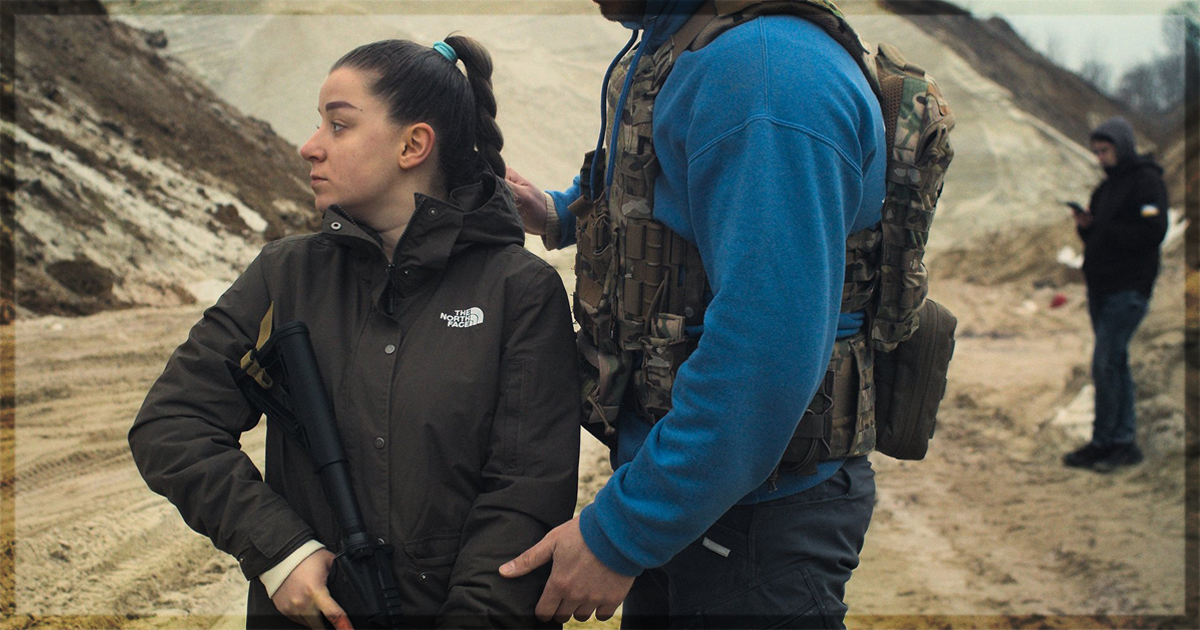Since Russia annexed the Crimean Peninsula in 2014, film production has shifted to narrating the intricacies of geopolitical matters. The 2022 Russian aggression and declaration of war by invading the Ukrainian borders provided different approaches to the reality in filmmaking. Therefore, the major film festivals in the world became a launch space to denounce the violence of the conflict. 20 Days in Mauripol, Porcelain War, Songs of a Slow Burning Earth, and others have premiered in grand venues and generated conversations. The respected Ukrainian arthouse author, Sergei Loznitsa, also followed this route. Last year, he presented his latest, The Invasion, at the Festival de Cannes in the Special Screenings segment. It is this documentary that is looked at more closely in this review.
In The Invasion, the director chooses not to film the battlefront. He avoids hyper-journalistic work like Mstyslav Chernov with 20 Days in Mauripol, which borrows its format from classical war documentaries like the Why We Fight series. Instead, Loznitsa focuses on life happening far from the frontline. He wants to admire the resilience of the populations throughout the destruction of reality and the community as they know it. He does so by aiming his lenses at the casualty of life, even if there is nothing casual in an ongoing conflict in your territory. We see a young couple getting married and dancing their newlywed waltz in the square. Also, he glimpses at the voluntary work of people who travel to the countryside to play with the children and give them Christmas presents. And the rituals of their culture, like swimming in a frozen lake in the winter and testing their body’s resistance. They attempt to live their lives while their families and friends die on the battlefield.
Consequently, the structure relies on framing the “normal” life in the extreme situation. The conduction does not interfere directly with what is happening in front of the camera. The only moment where a subject acknowledges the presence of the equipment is when Russian airplanes are bombing a school, and a little girl looks at the camera. She invites us to comprehend her childhood, learning in precarious underground rooms where dozens of children protect themselves. It is a powerful cut of the kaleidoscope of tragedies amidst a violent conflict. Observing the inner side of the chaos, the director avoids confronting the brutality in a direct form and chooses to do it differently. The micro-aggressions are the central thematic axis of The Invasion. The poor education is due to destroyed infrastructure, buildings separated in two halves, and people becoming homeless. It transforms into a chain of actions that harm other people’s lives and potentialize their tragedies.
Simultaneously, the film does not allow the audience to engage more with its subject. Loznitsa wants to explore individual dramas on a microscale, which sum into something grander. He does so, but the connection with the film is not as potent as it could be. Also, the two hours and twenty minutes length requires the audience’s patience for a series of varied short stories. Additionally, as it heads to the ending, the film loses engagement and drags with a selection of storylines that are broader than the first half. It becomes more about the spatial area rather than the people. A destroyed bridge hosts meetings from the elders, but the camera tracks more the geographical obliteration than the impact on the lives of that group. The distancing of development in background history, mainly because of its format, causes an emotional blocking with the subjects, but we feel the pain of the grander picture.
Also, the director disposes of lengthy material to accompany different reactions to the attack. The organization, in various segments, even rejecting the emotional weight, allows the public to understand how the pain becomes a feeling of national pride. One of the parts refers to a bookstore that gathers all of its Russian literature books and discards them for recycling. The action speaks more for the Ukrainian national pride and boycott of the aggressor’s culture, but it visually symbolizes the war. The director does not show the men on the battlefield. However, those salesmen are battling with the financial support of importing Russian products. It is a clever metaphor for a film that portrays the war by avoiding the journalistic approach to it. The camera looks for those whose lives are happening far from the confrontation.
In The Invasion, we observe the Ukrainian defense against the Russian attack, but we never see the armed conflict. Sergei Loznitsa observes how the population lives throughout dark times and proposes micro-moments to create a grander sense of tragedy and pain. It is a raw observation of the microscale of this bloodbath.
The Invasion screened at the It’s All True Film Festival.
Learn more about the film at the Cannes site for the title.


